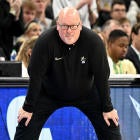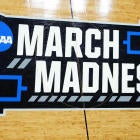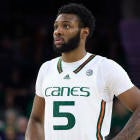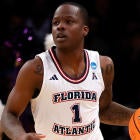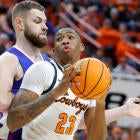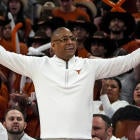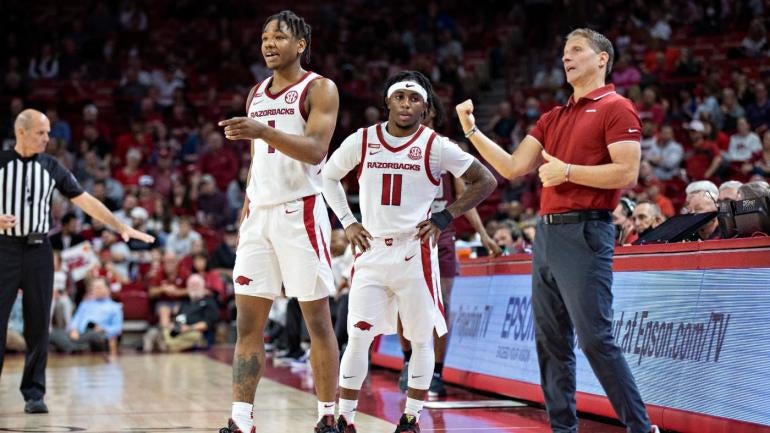
The road to transfer proliferation for both Arkansas and Texas started long before either coach paced those respective sidelines. For Arkansas coach Eric Musselman and Texas coach Chris Beard, the seeds to excel in the transfer portal — one that saw more than 1,700 players this past offseason —started before either coach landed their first Division I head coaching job.
For Musselman, the willingness to roll the dice on a transfer seemed like a much safer gamble than many he faced when coaching in the G League.
"To me, the immediate stuff is right up my alley," Musselman told CBS Sports. "… People are worried about what your locker room is going to be like, but I have zero flinch in having a guy for one year because when you're coaching in the G League, you've got a guy for one week."
Musselman said he was reminded of when the Golden State Warriors sent down Jeremy Lin to get him repetitions. Lin needed to play 32 minutes per night, and Musselman was only going to have him for two weeks.
"When you're used to that world, it's laughable when someone says we're only gonna have a guy for eight months, or you're only gonna have a guy for 30 games," Musselman said. "Shoot, I gave up a bunch of draft picks for Ish Smith and he came in and practiced one day, and then got called up."
For his part, Beard is something of a basketball vagabond, who spent time in the junior college, Division II and even semi-professional ranks. He credits all of those stops — including JUCO stints at Fort Scott (Kansas) Community College and Seminole State (Oklahoma) College — with his comfort leaping into the transfer fray. Reminded that his 2019 Texas Tech team came within a hair of winning it all with graduate transfers Matt Mooney and Tariq Owens playing major roles, Beard quickly pointed out that, "We were plugging away at this two decades earlier."
Junior college rosters don't just turn over quickly, with players only having a couple years to make their mark, the players can come from all walks of life. Beard noted that Jamal Brown, a guard who played at Texas Tech in 2000-01, played at Butler County (Kansas) for a rival school, then transferred to play for Beard at Fort Scott for a year before moving on.
"So basically the only college basketball I've ever known is where teams change from from year to year—you add new pieces," Beard said. "And so when we played for the national championship, (we had) a couple grad transfers that brought some national attention, but we were doing this long ago."
'Moneyball' and the transfer portal
Musselman is proud of the high school recruiting coups he and his staff pulled off at Nevada, including Californians Lindsey Drew, Cam Oliver, Devearl Ramsey and even a McDonald's All-American in Jordan Brown.
"We had some really, really good high school, highly rated players that came to Nevada, but we didn't think that we could build a team of high school players at Nevada because of competition with the Pac-12," Musselman said. "And so because of that, we felt like evaluation of college players became really, really important."
Musselman lived in the same neighborhood as then-Oakland A's general manager Billy Beane, whose success relying on advanced metrics in baseball was immortalized in the Michael Lewis bestseller "Moneyball", later made into a movie starring Brad Pitt as Beane. And his Wolf Pack staff worked to try to find similar advantages on the basketball court. Musselman said he began to see the value of analytics in evaluating players — a step further than using those numbers to evaluate one's own team — in preparing for the G League draft.
Together with Anthony Ruta, Hays Myers and his son Michael, Musselman worked to find ways to predict whether a low-major player could excel at the Mountain West level, or trying to project whether a high-major player would find more success dropping down. Whatever the process was, it seemed to work; Nevada reached the Sweet 16 with a starting lineup comprised entirely of former transfers: Caleb Martin and Cody Martin of NC State, Jordan Caroline of Southern Illinois, Kendall Stephens of Purdue and Hallice Cooke, who arrived from Iowa State after initially transferring from Oregon State. All were sit-out transfers.
The next year, Nevada spent 17 weeks in the top 10 and won 29 games with a starting lineup that included the Martins, Caroline, Trey Porter (Old Dominion) and Tre'Shawn Thurman (Omaha). The top reserve, Jazz Johnson, arrived from Portland.
Ruta, Myers and Michael Musselman are all on the Arkansas support staff now, as director of basketball operations, director of scouting and analytics and director of recruiting, respectively, and their work in trying to perfect their formulas for Arkansas is ongoing.
"We really felt after Year Three, that we knew, at least with the Mountain West, we felt like we had that formula about as soundproof as you could have," Eric Musselman said. "Now, just going into year three now at Arkansas, we're still building that program in the SEC. We don't have it like we did at Nevada—we're getting close."
Musselman said he was "hopeful" to fully crack the code before transfer season 2022 hits; Arkansas also receives numbers from outside sources, but mostly uses them to keep an eye on the competition, which he said uses those figures.
"We feel like our system internally — because we have three guys that take great pride in that — that our system is as good as anywhere as far as evaluation," Musselman said. "Now, that doesn't mean that you're going to get (the player); you can evaluate and still not win the recruiting process with the player. And that's what I would say, that's why we kind of reverted philosophically because there were some players that based on our analytics we really wanted, and just because of the fierce competition, we didn't get which maybe in the past we would have gotten with very little competition."
Don't weep for Arkansas having to work harder on that end. The Razorbacks still landed a stellar transfer class in South Dakota forward Stanley Umude, Pittsburgh wing Au'Diese Toney, Miami guard Chris Lykes and Wichita State guard Trey Wade. JD Notae, Arkansas' primary scoring option, was previously a transfer from Jacksonville and is in his second year on the court with the Razorbacks.
"I think it really depends on the makeup of your roster and the makeup of your other returning players, I do think you've got to identify a skill that's gonna fit the surrounding pieces," Musselman said. "We did; we felt like Chris Lykes would have some streaks to him that they could change complexities in the game. And we felt like losing Justin Smith, who was a versatile 6-7 guy and Moses Moody, we felt like both those guys at 6-6/6-7, we had to get two of them, or we couldn't play the style and the system we want. And so Au'Diese Toney and Stanley, we plugged those two guys in for Moses and Justin, and we changed our philosophical (approach)."
Those adjustments can take time. But Arkansas appears to have found its stride; the Razorbacks started off 10-5 and 0-3 in SEC play, but have won 12 of their last 13 games, with the lone defeat coming at Alabama by a single point. Some of that comes down to comfort and fit, questions that fall outside the workings of a formula, but serve to quickly narrow down the pool of potential transfer prospects.
"I think as soon as you dive in, and you talk to a parent, a high school coach, an AAU coach, or the player, I would say about 40% of our phone calls, we eliminate (the player) after one or two calls," Musselman said. "You can get a good feel for what's important to the player, the minute they start talking about how many shots, how many minutes (are available) … (they are) probably not going to be the right fit for us. They want to get better? They want player development? Then those conversations keep going."
The nation's top transfer class?
When Beard left Texas Tech to return to his alma mater, where he started his coaching career as a student assistant under Tom Penders, he encountered a Texas program in transition. Most of the roster that finished a half-game out of second place in the Big 12 under previous coach Shaka Smart before getting upset by Abilene Christian, was gone.
While four Longhorns returned — guards Courtney Ramey, Andrew Jones and Jase Febres and forward Brock Cunningham — four players do not a roster make. And Beard wasn't about to sit on his hands and wait for a multi-year building process. Tapping into the transfer portal in some ways could be easier for the Longhorns; after a coaching change, every player is starting over to some extent, meaning transfers wouldn't be on the outside looking in.
The result? Beard and his staff put together a class often cited as the nation's most decorated group, including three of the top nine transfer prospects according to CBS Sports' David Cobb: Minnesota's Marcus Carr (No. 1 overall), Utah's Timmy Allen (No. 6) and UMass' Tre Mitchell (No. 9), along with two other players (Vanderbilt's Dylan Disu, No. 20; Creighton's Christian Bishop, No. 33) ranked in the top 33.
While Allen was coming off an all-conference season in the Pac-12, Carr was arguably the crown jewel of the class after averaging 19.4 points and 4.9 assists per game for the Golden Gophers. Carr's decision to test the NBA Draft waters threw a wrench into any plans of a more conventional — read: quicker — recruitment, but Beard took full advantage.
"When I reflect and look back, the thing I'll always remember about our recruiting process with Marcus Carr was that there was great transparency, and there was great respect and there was great communication from the very first conversation," Beard said. "Marcus was very upfront where he was in terms of the NBA process in the summer. And we were very upfront where we were in terms of building the Texas team, to be very competitive relative to year one, to be a team that has a chance."
Beard said Carr asked about the other pieces the Longhorns were assembling, not because he feared competition, but because he wanted teammates who could play at a high level.
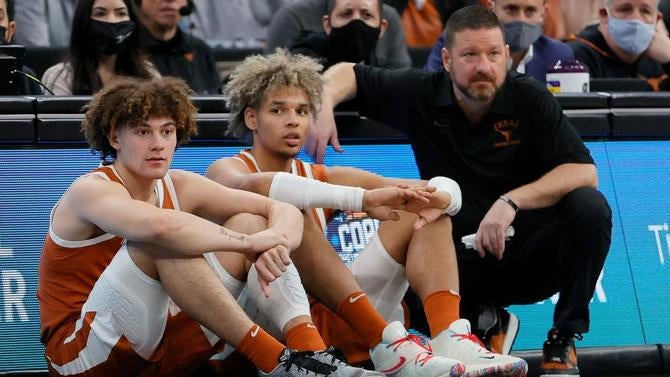
"That was inspiring," Beard said. "I'll never forget that part about Marcus. And I've had the pleasure of coaching and recruiting a lot of guys like that. But it's interesting: when recruits and their circles start talking about who you've got on the team, they're probably not going to be the kind of guys who can play at Texas."
Carr, who kept in constant contact with the Texas staff even as he auditioned for NBA teams, eventually climbed in the boat, giving the Longhorns the consensus top transfer class, one that pushed Texas into the No. 5 spot in the preseason Associated Press Top 25 Poll.
While Texas hasn't quite lived up to the latter expectation — to be fair, most projecting Texas as a top five team were doing so believing the Longhorns would get there by year's end — the transfer class has largely held serve. Texas ranks second nationally in total Bayesian Performance Rating generated by transfers this season, according to Evan Miyakawa of EvanMiya.com, behind only Beard's previous stop at Texas Tech.
Here's how the top five transfer classes sit in total BPR:
- Texas Tech — 235 BPR
- Texas — 210
- Kentucky — 182
- Wake Forest — 172
- Auburn — 156
The Longhorns are 6-3 in their last nine games, with two of the losses coming to Texas Tech and the other a defeat at Baylor. And that stretch has also brought Texas' top two wins of the season, home victories over Tennessee and Big 12 leader Kansas.
"I think that's just a work in progress, and every team's like that," Beard said. "I mean, this is February. If somebody's telling you that their team is exactly where they want them right now, then they'll be a one and out in the tournament—you got to keep getting better.
"So, for us, it's always been a process. Like, even in that Gonzaga game (a 12-point defeat in the Longhorns' second game) from the first half to the second half, we improved," Beard said. "And so that's always the objective. But I think at this point in the season, we played really good basketball on both ends of the floor, we have a lot of internal confidence that we can compete with anybody in the country—what we're striving for is consistency.
"We've proven we can do it," Beard said. "The next step as March nears, is to try to find a different level of consistency. But in that regard, I don't think we're different than any other team. We've played a lot of really good basketball, we're still striving for our complete 40-minute game."
What of the future?
One of the lessons "Moneyball" teaches is that — always through evaluation, as Musselman notes — teams should search for the efficient path and take advantage of market inefficiencies. And Musselman said the fierce competition in the transfer portal this past year took away much of its value.
"I would say, the first two years, there was zero competition with transfers. I mean, we didn't have any problem, we had very few recruiting battles," Musselman said. "And then I would say in year three, you know, some competition. And then last year the recruiting and the over-recruiting of transfers became so there were so many misevaluations, so many players going above the level that we felt (they merited), and the competition was so fierce. And that's why we have five freshmen coming in next year.
"We thought the transfer market was being over-recruited," Musselman said. "And so we changed course—really, it was last summer, that we decided to go that route."
The Razorbacks' course change included the No. 2 recruiting class in 2022 according to the 247Sports Composite, including two five-star prospects in wings Nick Smith and Jordan Walsh.
"At the SEC (level), you've got to win with stars. There's very few stars out of the portal. There's some … there's some, but very few," Musselman said. "You gotta win with Moses Moody … you've got to win with stars. And like I said, there's very, very few in the portal. There's very few portal guys that get drafted. That's a fact.
"I think that's harder to do the higher level you're at, and the more talented your league is," Musselman said. "I still think you can do that (find stars in the transfer portal) at the Mountain West or WCC. Not so sure in our league—it becomes more problematic to do it that way. Put it that way. Higher risk."
Texas has its own strong traditional recruiting class, ranked No. 12 in the 247Sports Composite and containing two five-star prospects in wing Dillon Mitchell and point guard Arterio Morris. But Beard was less committal about moving away from pounding the portal pavement.
"I understand what Muss was saying there. I understand his view, and I respect that," Beard said. "To me, it's a game of talent. And we're always going to recruit anywhere and everywhere, anytime we possibly can to get the players that we need to win at Texas. And again, those are guys that can compete at the highest level, those are NBA prospects. Whether that be from international, or junior college, or prep schools, or transfers or a high school base, it's a game of talent."













